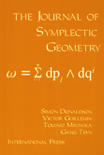
Journal of Symplectic Geometry
Scope & Guideline
Fostering collaboration in the realm of geometry and topology.
Introduction
Aims and Scopes
- Symplectic and Contact Geometry:
The journal extensively covers the theory and applications of symplectic and contact geometry, exploring structures, invariants, and morphisms that define these fields. - Lagrangian and Hamiltonian Systems:
A significant focus is placed on Lagrangian and Hamiltonian systems, especially regarding their geometric properties, invariants, and relationships with other mathematical structures. - Poisson Geometry and Cohomology:
Research related to Poisson geometry, including cohomological aspects and applications to various mathematical frameworks, is a core area of the journal. - Geometric Quantization and Representation Theory:
The journal features studies on geometric quantization methods and their implications in representation theory, providing insights into the interplay between geometry and physics. - Applications to Mathematical Physics:
Research that connects symplectic geometry with mathematical physics, particularly in areas like string theory and quantum mechanics, is emphasized, showcasing the journal's interdisciplinary nature.
Trending and Emerging
- Higher-Dimensional Symplectic Structures:
There is an increasing trend in exploring higher-dimensional symplectic structures, including studies on toric varieties and their applications, reflecting a broader interest in complex geometries. - Lagrangian Floer Homology:
Research on Lagrangian Floer homology and its applications is gaining traction, as mathematicians seek to utilize these tools for deeper insights into symplectic invariants and their relationships. - Applications of Symplectic Geometry in Mathematical Physics:
A notable rise in publications connecting symplectic geometry with mathematical physics, particularly in the context of quantum mechanics and string theory, showcases the interdisciplinary relevance of the field. - Advanced Cohomological Techniques:
Emerging themes include the application of advanced cohomological methods to solve complex problems in symplectic and Poisson geometries, indicating a trend towards more abstract mathematical frameworks. - T-duality and Courant Algebroids:
Research focusing on T-duality and its implications within Courant algebroids has become more prominent, reflecting a growing interest in the interplay between geometry and theoretical physics.
Declining or Waning
- Traditional Symplectic Topology:
There seems to be a decreasing emphasis on classical results in symplectic topology, with researchers gravitating towards more innovative and complex structures, possibly due to the saturation of previously explored themes. - Elementary Contact Geometry:
Studies focused on basic contact geometry concepts are appearing less frequently, indicating a potential shift towards more advanced and applicable aspects of contact structures. - Low-Dimensional Topology:
The integration of symplectic geometry with low-dimensional topology has seen a decline, possibly as the community shifts towards higher-dimensional and more abstract theories.
Similar Journals

ANNALES DE L INSTITUT FOURIER
Connecting Scholars Through Cutting-Edge MathematicsANNALES DE L INSTITUT FOURIER is a premier academic journal published by ANNALES INST FOURIER, specializing in the fields of Algebra and Number Theory as well as Geometry and Topology. Since its establishment, the journal has garnered a distinguished reputation, evidenced by its Q1 quartile ranking in the 2023 category assessments and its Scopus Rank of #37 out of 119 in Algebra and Number Theory, and #34 out of 106 in Geometry and Topology, placing it within the top percentile of its field. The journal serves as a vital platform for disseminating groundbreaking research and innovative methodologies, catering to a global audience of researchers, professionals, and students. With a commitment to the advancement of mathematical sciences, ANNALES DE L INSTITUT FOURIER invites contributions that push the boundaries of knowledge and foster collaboration across disciplines. Although it does not offer open access, the rigorous peer-review process ensures that published papers meet the highest academic standards, making it a critical resource for anyone engaged in advanced mathematical research.
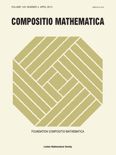
COMPOSITIO MATHEMATICA
Pioneering Research in MathematicsCOMPOSITIO MATHEMATICA, published by Cambridge University Press, is a leading journal in the field of mathematics, with a specific focus on algebra and number theory. With an impressive impact factor and ranked in the Q1 quartile for its category, it holds a prominent position in the academic landscape, currently standing at Rank #26 out of 119 journals in its field, within the 78th percentile of its category, according to Scopus rankings. Since its inception in 1996, the journal has been dedicated to publishing high-quality research articles that contribute significantly to the advancement of mathematical knowledge and theory. While it does not offer open access, the journal ensures a rigorous peer-review process that upholds the highest academic standards. Researchers, professionals, and students alike are encouraged to engage with the rich, innovative content of COMPOSITIO MATHEMATICA, which continues to foster a vibrant scholarly community dedicated to exploration and discovery in mathematics.
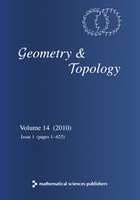
GEOMETRY & TOPOLOGY
Pioneering Research at the Intersection of Shapes and SpacesGeometry & Topology is a leading journal in the field of mathematics, focusing on the intricate relationships between geometric structures and topological spaces. Published by Geometry & Topology Publications in the United Kingdom, this prestigious journal boasts an impressive ranking, placing it in the Q1 quartile for Geometry and Topology as of 2023, with a notable Scopus rank of #13 out of 106, indicating its significant impact within the discipline (88th percentile). With publication years spanning from 1997 to 2024, the journal serves as a vital platform for disseminating high-quality research, fostering advances in both theoretical and applied aspects of the field. While it does not currently operate under an Open Access model, it nevertheless attracts the attention of a diverse audience, including researchers, academics, and students eager to explore innovative methodologies and findings in geometry and topology. The journal’s commitment to excellence makes it an essential resource for anyone passionate about mathematical research.
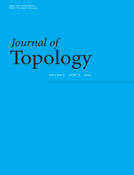
Journal of Topology
Exploring the Dimensions of TopologyThe Journal of Topology, published by WILEY, is an esteemed peer-reviewed journal that has been at the forefront of the field since its inception in 2008. With an ISSN of 1753-8416 and an E-ISSN of 1753-8424, this journal is dedicated to the fundamental and applied aspects of topology, offering a platform for innovative research and critical findings in this vital area of mathematics. As a recognized leader in its category, the journal proudly holds a Q1 ranking in Geometry and Topology, reflecting its impact and contribution to the academic community, with a Scopus rank of #25 out of 106 in its field, placing it in the 76th percentile. Researchers and professionals can access high-quality articles that advance theoretical knowledge and practical applications, enhancing the mathematical literature and serving as a valuable resource for students and scholars alike. With ongoing publication until 2024, The Journal of Topology continues to shape the discourse in geometry and topology, making it an essential read for anyone involved in the field.

Journal of Geometry
Charting New Territories in Geometric ResearchJournal of Geometry, published by SPRINGER BASEL AG, is a prominent scholarly journal, ISSN 0047-2468 and E-ISSN 1420-8997, dedicated to the field of Geometry and Topology. Hailing from Switzerland, this journal has been a vital resource for researchers since its inception in 1971 and continues to contribute invaluable insights into geometric theories and applications through 2024. With a HIndex that reflects its academic impact, the journal currently ranks in the Q3 category for Geometry and Topology, placing it within the top half of publications in its field, as evidenced by its Scopus ranking of #71 out of 106 in Mathematics, Geometry, and Topology. The Journal of Geometry serves as a platform for original research, reviews, and special issues that address foundational and cutting-edge topics, making it an essential read for mathematicians, educators, and students alike. While it is not an open-access publication, the journal maintains accessibility through institutional subscriptions, ensuring that its significant contributions to geometry are readily available to the academic community.
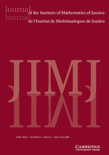
Journal of the Institute of Mathematics of Jussieu
Advancing Mathematical Frontiers with Every PublicationJournal of the Institute of Mathematics of Jussieu, published by Cambridge University Press, is a leading academic journal that has established itself as a vital resource in the field of mathematics. With an impressive impact factor and a ranking in the top quartile (Q1) of miscellaneous mathematics, the journal serves as a platform for high-quality research from both established scholars and emerging researchers. Spanning from 2002 to 2024, the journal aims to foster collaboration and innovation in the mathematical community by publishing original research articles, reviews, and critical discussions on a wide range of mathematical topics. Although the journal does not offer open access, it remains widely accessible through various academic institutions and libraries, ensuring that critical advancements in mathematics are shared with a global audience. Located in the United Kingdom at the prestigious Cambridge campus, the journal reflects the rigorous standards of its publisher and the rich academic tradition of its home institution.

JOURNAL OF GEOMETRY AND PHYSICS
Advancing Theoretical Insights in Geometry and PhysicsThe JOURNAL OF GEOMETRY AND PHYSICS is a distinguished peer-reviewed journal published by Elsevier, dedicated to fostering the exploration and dissemination of research at the intersection of geometry and physics. Established in 1984, this journal covers a broad range of topics, including the theoretical aspects of geometry, topology, and mathematical physics, making it an essential resource for researchers and practitioners in these fields. With an impressive Q2 ranking in various categories, including Geometry and Topology, Mathematical Physics, and General Physics and Astronomy, the journal ranks among the top 25% of its peers, reflecting its significant impact in advancing relevant discourse. Although currently not offered as an open-access publication, it maintains a strong readership due to its contribution to high-quality scholarly articles and critical reviews. The journal’s commitment to stimulating innovative research continues to solidify its reputation as a pivotal platform for exchanging ideas and fostering collaboration within the scientific community.

ADVANCES IN GEOMETRY
Exploring the Frontiers of Geometry and TopologyADVANCES IN GEOMETRY is an esteemed journal dedicated to the dissemination of innovative research in the field of geometry and topology. Published by WALTER DE GRUYTER GMBH, this journal serves as a vital platform for researchers and practitioners from around the globe, reflecting the latest advancements and stimulating critical discussions in the subject. With an ISSN of 1615-715X and an E-ISSN of 1615-7168, it enjoys a reputable standing, evidenced by its classification in the Q3 category of the geometry and topology domain according to 2023 metrics. Although the journal operates under standard access options, it is committed to fostering scholarly communication and raising the visibility of high-quality research. The journal's impact on the field is underscored by its Scopus rank of #77 out of 106, placing it in the 27th percentile. Since its inception in 2001, ADVANCES IN GEOMETRY has continually blossomed, promising a convergence of ideas and methodologies that drive forward the understanding of geometric theory. This journal is essential reading for those eager to stay at the forefront of geometry and topology research.

Algebraic and Geometric Topology
Bridging Algebra and Topology for Future DiscoveriesAlgebraic and Geometric Topology, published by Geometry & Topology Publications, is a premier journal dedicated to the fields of algebraic and geometric topology. With its ISSN of 1472-2739 and a commendable Q1 ranking in 2023, this journal serves as a vital resource for top-tier research, showcasing groundbreaking developments and fostering discussions among mathematicians globally. Operating since 2007 and continuing through 2024, the journal is positioned within the United States and aims to deliver open access to the latest findings, promoting collaboration and innovation. As a significant contributor to the mathematical landscape, Algebraic and Geometric Topology appeals not only to researchers and professionals, but also to students eager to explore the rich interplay between algebra and topology, making it an essential read for anyone involved in advanced mathematical studies.
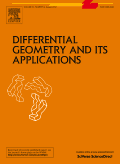
DIFFERENTIAL GEOMETRY AND ITS APPLICATIONS
Pioneering Insights in Geometry and Its ApplicationsDIFFERENTIAL GEOMETRY AND ITS APPLICATIONS, published by Elsevier, is a premier academic journal primarily focused on the intricacies of differential geometry and its wide-ranging applications in various fields, including mathematics and theoretical physics. Established in 1991 and currently exploring relevant advancements through 2024, this journal serves as a vital platform for disseminating high-quality research that integrates theory and computational methodologies.With an ISSN of 0926-2245 and an E-ISSN of 1872-6984, it holds a significant position within the mathematical community, evidenced by its current quartile ranking of Q3 in major categories such as Analysis, Computational Theory and Mathematics, and Geometry and Topology. While open access options are not available, the journal's contributions are pivotal for researchers seeking to enrich their understanding of complex geometrical frameworks and their practical applications. As the landscape of differential geometry evolves, this journal stands out as a crucial resource for fostering innovation and collaboration among scholars and practitioners alike.